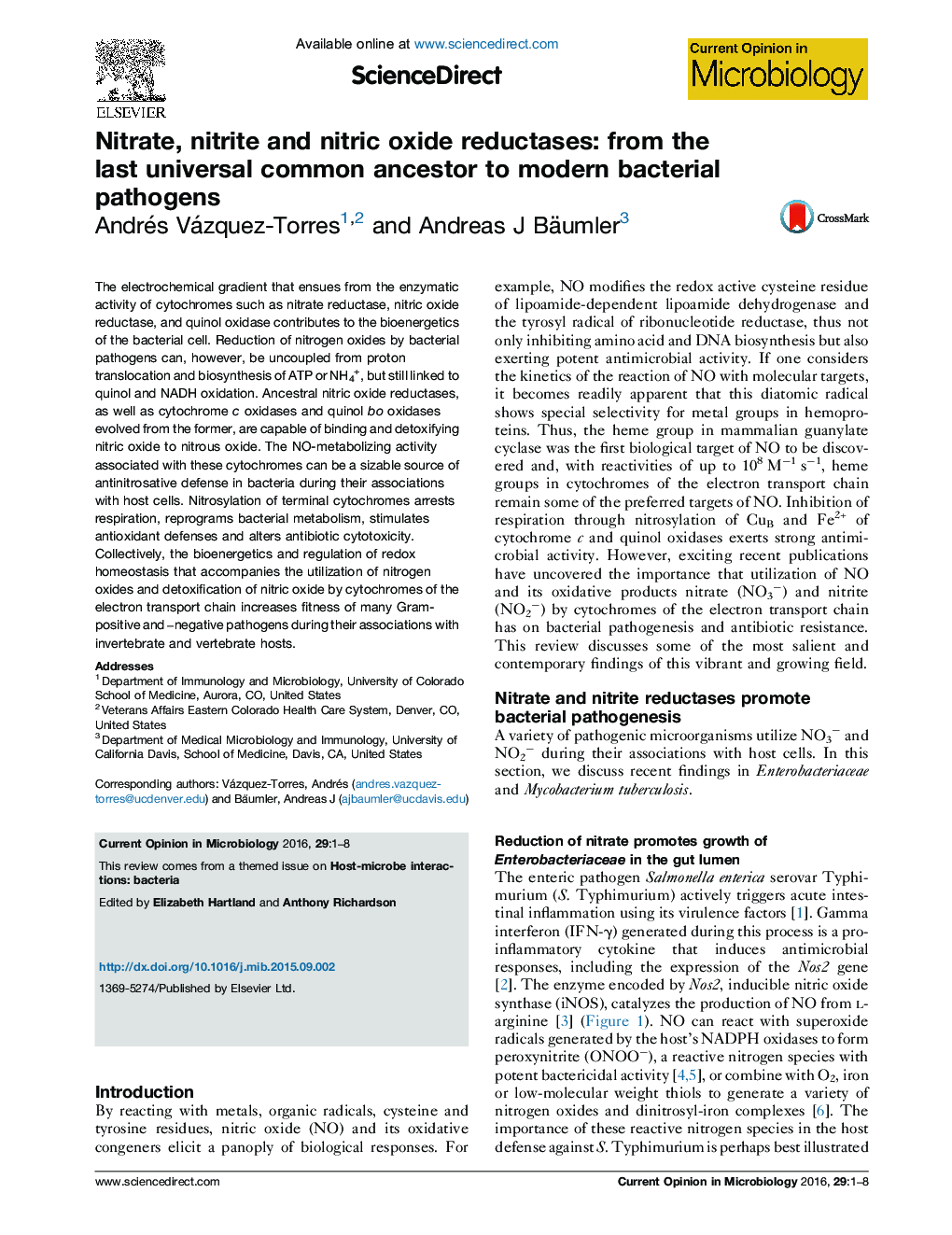| Article ID | Journal | Published Year | Pages | File Type |
|---|---|---|---|---|
| 6131688 | Current Opinion in Microbiology | 2016 | 8 Pages |
Abstract
The electrochemical gradient that ensues from the enzymatic activity of cytochromes such as nitrate reductase, nitric oxide reductase, and quinol oxidase contributes to the bioenergetics of the bacterial cell. Reduction of nitrogen oxides by bacterial pathogens can, however, be uncoupled from proton translocation and biosynthesis of ATP or NH4+, but still linked to quinol and NADH oxidation. Ancestral nitric oxide reductases, as well as cytochrome c oxidases and quinol bo oxidases evolved from the former, are capable of binding and detoxifying nitric oxide to nitrous oxide. The NO-metabolizing activity associated with these cytochromes can be a sizable source of antinitrosative defense in bacteria during their associations with host cells. Nitrosylation of terminal cytochromes arrests respiration, reprograms bacterial metabolism, stimulates antioxidant defenses and alters antibiotic cytotoxicity. Collectively, the bioenergetics and regulation of redox homeostasis that accompanies the utilization of nitrogen oxides and detoxification of nitric oxide by cytochromes of the electron transport chain increases fitness of many Gram-positive and -negative pathogens during their associations with invertebrate and vertebrate hosts.
Related Topics
Life Sciences
Immunology and Microbiology
Microbiology
Authors
Andrés Vázquez-Torres, Andreas J Bäumler,
